Wondering what to do with rose petals? Explore their surprising power—from relieving sore throats to easing menstrual cramps—in one of our most popular posts ever!
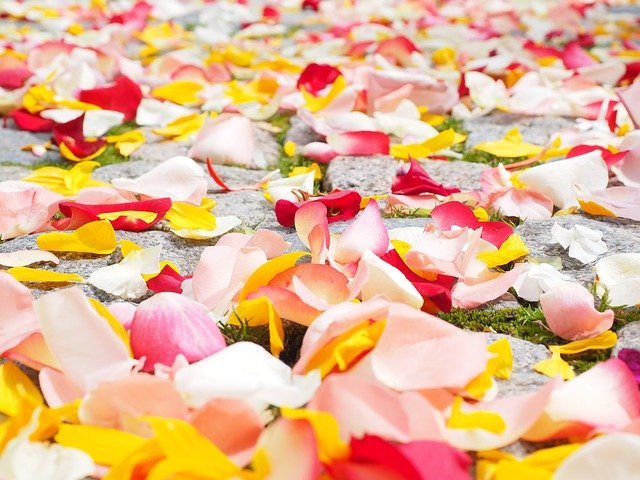
What to Do With Rose Petals—12 Ideas From the Kitchen to the Boudoir
The fabled rose—queen of the plant kingdom. While the Wild Roses, Rosa rugosa, are considered the true queen of roses for medicinal purposes, all roses lend their soothing and nurturing support in myriad ways.
This said, did you know that there are over 100 species of roses?
You need not go out into the wild to look for roses, however. In fact, you probably already grow some yourself or know someone who does since they are commonly cultivated as ornamentals.
You May Also Enjoy:
“7 Types of Marigolds—Which One is Right for You?”
Although roses are fairly easy to grow, often requiring nothing more than periodic pruning, the spectacular sight and heavenly scent of the flowers do not last long and soon give way to the red-colored fruits known as rose hips.
How to Collect Fresh Rose Petals
Rose petals are edible and can be collected at any time for this purpose. Gathering rose petals is easy to do as long as one is wary of the thorns.
However, rose petals that are to be used in recipes or to be dried require a bit of planning. The perfect time to collect rose petals is mid-morning on a dry day when the dew has evaporated and there’s been no rain for at least two days. Bring your fingers over an opened rose flower and tug gently on all the petals at once.
Petals that are ready to be released will fall easily into your hands while the center of the flower remains intact to produce the rose hip soon thereafter. Petals that resist when you tug on them are not ready to be collected, and if you persist you may accidentally pull off the whole flower.
How to Dry Rose Petals
While gathering your rose petals, collect them in a paper bag. This will help to absorb any moisture that may be on them. A wooden basket will work too. Only use a plastic bag as a last resort.
You May Also Enjoy:
“Edible Redbud Flowers—The Delicious and Nutritious Harbinger of Spring”
To dry the rose petals, simply spread newspaper on a flat surface, distribute the petals across the paper, and let them air dry. They should be ready in a few days.
You can also let them air dry in a dehydrator, or turn it on and use the lowest setting (95°F).
12 Creative Uses for Rose Petals
Now you know how to collect rose petals, and you know that they are both edible and medicinal. Read on to discover some of the ways you may want to experience the beneficial effects of rose petals for yourself or for your family.
1. Let Them Eat Rose Petals on Toast
Place a layer of your favorite nut butter, cheese topping, or spread on toast. Place a fresh petal on top of the spread and continue to cover with petals. Now, eat on up!
White petals make a nice contrast against the brown of a nut butter while dark, damask-colored roses lend their perfume to the air before taking a bite.
Feel free to use a combination of colors or to try this idea with crackers and serve as interesting hors-d’oeuvres. Different colors have different tastes, so have fun experimenting!
2. Add Fragrance to Your Next Salad
Red, light pink, dark pink, white, yellow, orange, mauve, or blue—fresh rose petals make a stunning contrast against the greens in a salad. Not only do they tempt the eyes, but the nose, too. Rose petals contain anthocyanins, so feel free to indulge in these antioxidant-rich delicacies.
3. Help a Boo-Boo or a Sore Throat
Rose petals are antiviral, antibacterial, and antiseptic, so the next time you get a small cut while out in the garden, apply a fresh petal or two and hold in place as a protective covering. To help relieve a sore throat, infuse fresh rose petals in honey.
Simple Rose-Petal Honey Recipe
Add fresh rose petals to a mason jar and lightly pack them in. Pour honey over the petals almost to the top, and stir with a non-metallic object (a bamboo skewer works nicely) to ensure petals are coated. Add more honey to the top. Put on lid and screw cap and let them sit for 6 weeks in the cupboard.
Strain out rose petals using a sieve, pushing down on the rose petals to extract all of the honey with the back of a spoon or, make this task easier by using a nut milk bag. Store your rose-petal honey in a cool, dry place.
Add a teaspoon or two to some warm tea to nix a sore throat “in the bud” (at the first sign of a sore throat).
4. Move Blood, or Stop Diarrhea
Rose tea makes an excellent emmenagogue to help move blood and quell cramps during menstruation. Rose tea can also help to curb diarrhea since roses are astringent (wild rose being especially so).
Rose Tea Recipe
Fill a mason jar to the top with slightly packed dried petals. Pour boiling water over the roses, to the top of the jar. Place lid and screw cap on; let sit 4 hours to overnight. Strain out petals using a sieve, squeezing out the excess tea from the flowers. (You can also use a nut milk bag: Place nut milk bag in a bowl, pour tea into the bag, close the bag and squeeze out the liquid.)
To help relieve menstrual cramps or diarrhea, drink 2–3 cups per day.
5. Soothe and Nourish Your Skin
Roses are considered to be cooling and hydrating, and they offer their soothing energy to help with both irritated and dehydrated skin when made into a floral water. While you can buy rose floral water, you might want to try your hand at this homemade version.
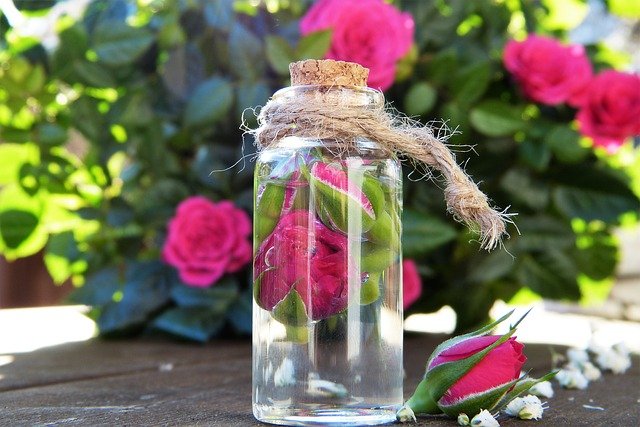
Image by silviarita from Pixabay
Rose Floral Water Recipe
You’ll need:
A large pot
A heat-proof bowl about the same size as the pot (although you can make a smaller bowl work)
A brick or another heat-proof bowl to hold up the first bowl
Plenty of ice
Approximately 4–6 cups of fresh rose petals
Some spring water
A turkey baster
Clean spritz bottle (optional)
A funnel (optional, but if you’re using the spritz bottle, this makes pouring the Rose Floral Water into it a lot easier)
Place the brick in the bottom of the pot and place the bowl on top of the brick. If you don’t have a brick, use an inverted bowl and place the first bowl on top of the inverted bowl. Next, place fresh rose petals in the pot all around the bowl. The rose petals should come up halfway to the bowl—use about 4–6 cups of fresh petals. Add spring water to cover the roses. Place the lid on the pot and turn on the heat to medium-high. When the water starts boiling, lower the heat to medium. Invert the lid of the pot and add ice to the lid.
You May Also Enjoy:
“Natural Cold Care in 3 Easy Steps”
It works like this: The rose petals in the water are simmering in the pot. The rose water rises to the top of the pot (vaporization), where it meets the cold lid. Condensation forms on the lid and then it drops back into the bowl. The liquid collected in the bowl is now floral water!
Since the ice will melt, use the turkey baster to suck up the excess water. Continue to add fresh ice for the next 20–30 minutes. You can check after 15 minutes to make sure there is still water in the pot. Let everything cool, and then pour the floral water into a clean spritz bottle (using a funnel makes this task a lot easier).
To use as a gentle toner for the face, help soothe irritated skin (including acne and sunburn), or help rehydrate skin, simply spritz on face after a shower, after being out in the garden/sun for too long, or as needed.
6. Ease Your Pain
Since roses are well-known for their emollient and healing properties, they nourish all kinds of skin types, including skin with rosacea and eczema. Roses are also great for soothing pain and easing taut nerves when made into a simple massage oil.
Rose-Petal Oil Recipe
Fill a mason jar with slightly packed fresh rose petals. Pour olive or sweet almond oil over the petals. Mix to coat the petals with the oil—a bamboo skewer makes a good stirring stick. After mixing, add more oil to the top of the jar. Place lid and screw cap on, let sit 6 weeks in the cupboard, then strain out the rose oil (yes, a nut milk bag or sieve will work). Store your oil in a dark amber bottle.
Variations: To extend the shelf life of your oil, you can add 1 teaspoon of vitamin E oil. To make your facial oil more nourishing, you can use walnut or macadamia oil (highly nourishing for dry, sensitive, or mature skin). You can also add in several drops of rose hip seed oil (purchase in health food stores), if desired.
7. Open the Love Center
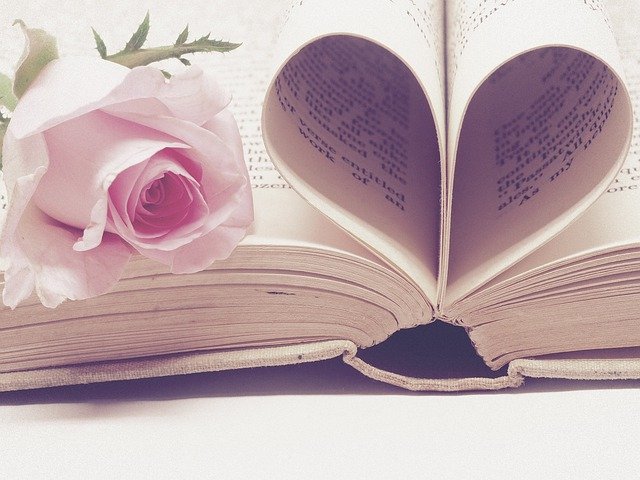
Image by Jess Bailey from Pixabay
Roses have long been associated with love, and they are known to help open the heart chakra. They have also been known to help mend a broken heart. Try this sweet and simple recipe for a little emotional healing.
Rose Glycerite Recipe
Fill a mason jar to the top with slightly packed fresh rose petals. Pour food-grade glycerin over the rose petals, stirring to ensure they are coated (a bamboo skewer works well for this). Add more glycerin to the top. Put on the lid and screw cap and store in the cupboard for 6 weeks. Use a nut-milk bag or sieve to strain out the liquid, pressing or squeezing on the petals to extract all of the liquid. Store the rose glycerite in a dark amber bottle that has a cap affixed with a dropper.
You can carry this bottle around with you. Whenever you need a little emotional rebalancing, take 20–30 drops in a glass of water. Glycerin is 60% as sweet as sugar, so consider this a sweet “medicine” indeed!
8. Uplift Your Spirits
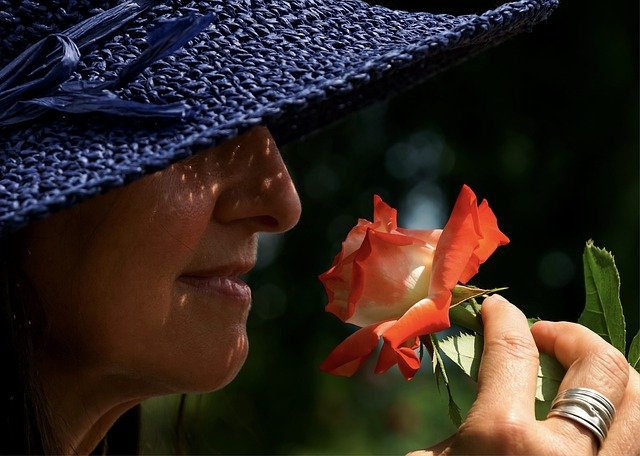
Image by Susanne Jutzeler, suju-foto from Pixabay
Roses are known for helping to decrease stress, tension, and depression, and to lighten the mood. So why not indulge in a 0 calorie pick-me-up with some Rose Petal Jello?
Rose Petal Jello Recipe
To 2 cups of rose tea (see #4 above), add a teaspoon of stevia, or more, according to your taste. Put the tea in a glass or ceramic pot and bring to a boil. Remove from heat and add in 1 package of gelatin, stirring to dissolve about 2 minutes; then put in the fridge to set.
Note: Different roses yield different-tasting jello. How strong or weak you make the tea also affects the taste. For example, try using 1/2 oz. rose petals in 1 liter of water if you think it’s too strong, or add in 1 1/2 oz. petals to 1 liter of water for a stronger taste.
Variations: To sweeten the jello more, try adding in a tablespoon of rose glycerite (see #7 above), plus stevia to taste. Since gelatin is great for the skin, you can add in 2 packages of gelatin instead of one.
9. Add Fragrance to Your Unmentionables
Rose petals are commonly used in potpourri, so why not make your own? It’s cheap and easy. While you can add dried rose petals to mini organza bags (purchase in stores or online), for a dirt-cheap DIY solution, simply add dried petals to a paper envelope, seal it and slip it in your drawer.
You could also make your own bag with some leftover fabric scraps. Use shears to cut a square or circle in a piece of fabric. Add a few rose petals to the center, gather the edges together, then secure with a rubber band. Finally, add a ribbon to hide the rubber band.
You May Also Enjoy:
Get TGN’s Immunity Support Kit at an Incredible Discount
If you’d like a stronger scent, add a few drops of rose essential oil. If you’d like the scent to last longer, add 1 tablespoon orris root powder to every 2 cups of rose petals.
10. Entice You, Entice Me
It’s no secret that roses are an aphrodisiac. Indeed, rose petal tea helps to tonify both the male and female reproductive systems. In men, it helps to speed up sperm motility, thereby helping with fertility. In women, the bioflavonoids in roses help with the production of estrogen. And the phytosterols in roses help both sexes to balance their hormones. Although you can get some of this love action by sipping on a cuppa rose tea (see #4 to learn how to make rose tea), try using rose tea instead of water the next time you cook rice, quinoa, millet, or your other favorite grains.
11. A Romantic Dinner for Two
Roses have long been associated with love, and they are also aromatic. Try adding some romance to the dinner table with this simple recipe: Use equal parts rose tea (see #4 above) and apple cider vinegar with the “mother.” Store in a spray bottle. To use: Spritz on salads to lend some romance. You can also pair this with oil to make a romantic rosy salad dressing.
12. Relax in Luxury
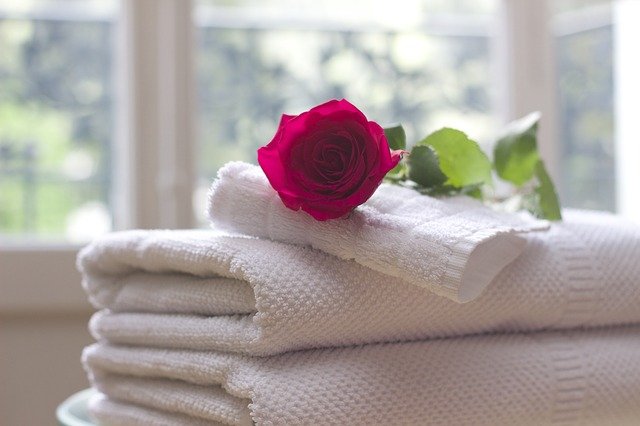
Image by Tesa Robbins from Pixabay
What else can I say, roses are simply luxurious! Restorative and relaxing, rose petals are known to calm the mind. So the next time you want some “me time,” unwind by adding rose petals to your bath. Simply add a small handful of dried rose petals to the center of a face cloth, tie with elastic bands, secure the cloth over the faucet and run the water. Or you can add the facecloth directly to the bath water. Add in some Epsom salts or sea salts and let the fragrance of the roses envelop you in serenity.
Do You Have More to Add to this List?
These are only a few simple suggestions about ways that you can creatively use rose petals at home to enhance your meals, your health, and your relationships. If you have other uses for rose petals that I’ve overlooked here, go ahead and add a comment below to share your ideas with our Community!
However you use them, be sure to give carte blanche to a wholesome dose of love and perfume about the air. Enjoy!
_____________
This is an updated version of a post that was originally published on August 5, 2015. The author may not currently be available to respond to comments, however we encourage our Community members to chime in to share their experiences and answer questions!
The Grow Network is a participant in the Amazon Services LLC Associates Program, an affiliate program designed to provide a means for our team to earn fees for recommending our favorite products! We may earn a small commission, at no additional cost to you, should you purchase an item after clicking one of our links. Thanks for supporting TGN!

Cat Wilson is a holistic health practitioner who loves plants and meditation. When she isn’t working out or writing, you can find her hugging trees and talking to the wild weeds in her garden. Grab a gluten-free recipe or get some help with going vegan or mindfulness at her website or on her YouTube Channel: Cat’s Raw Paw.
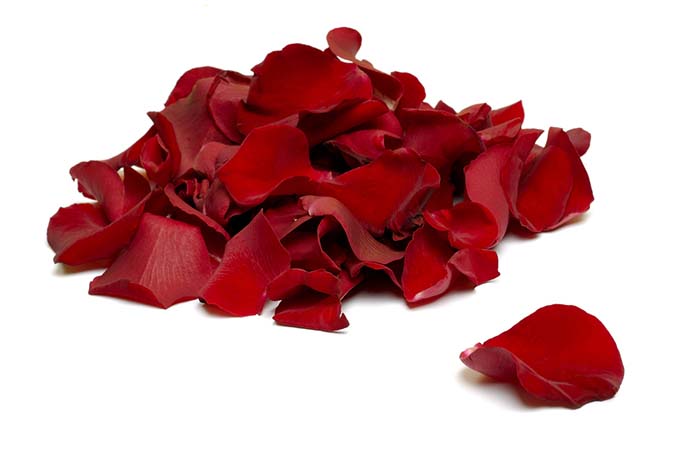
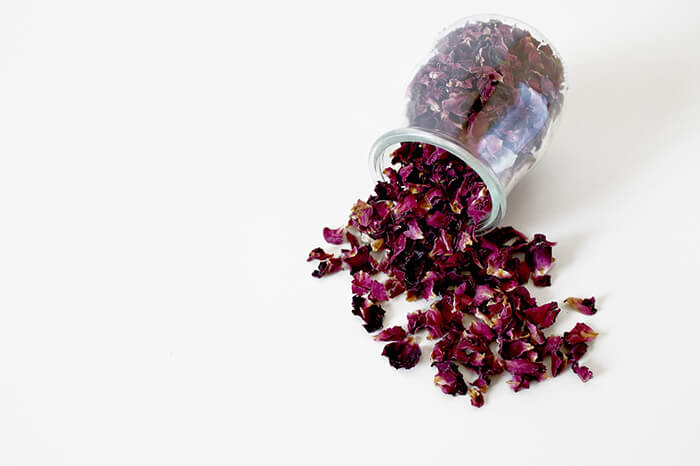

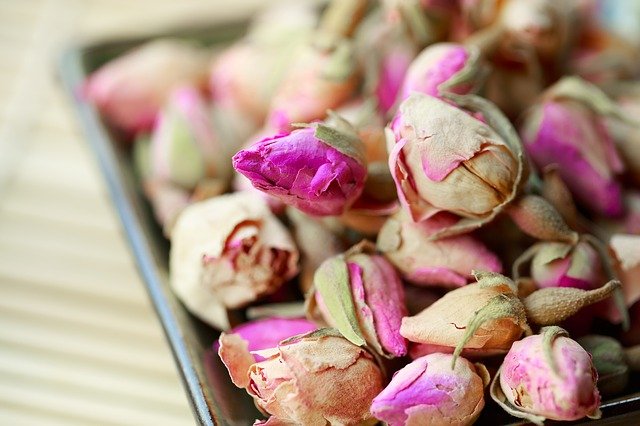
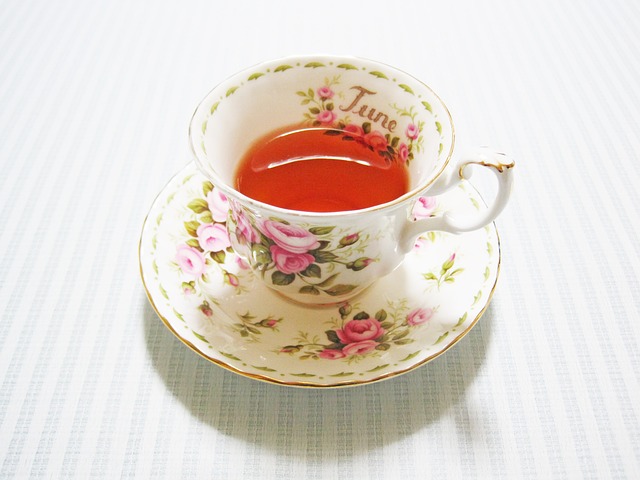
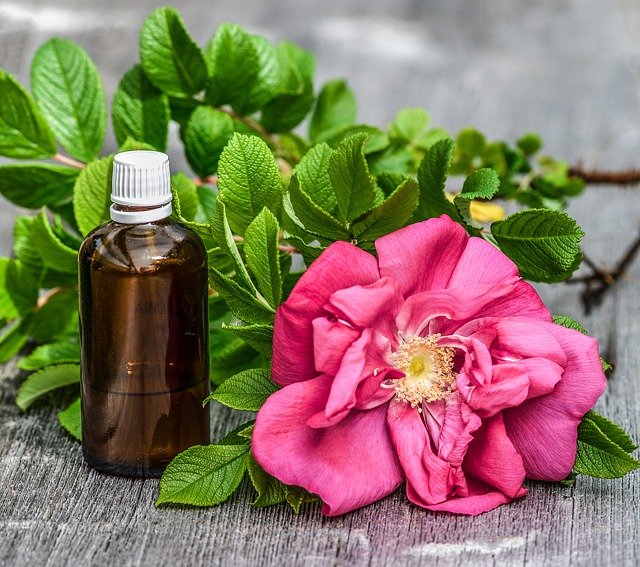
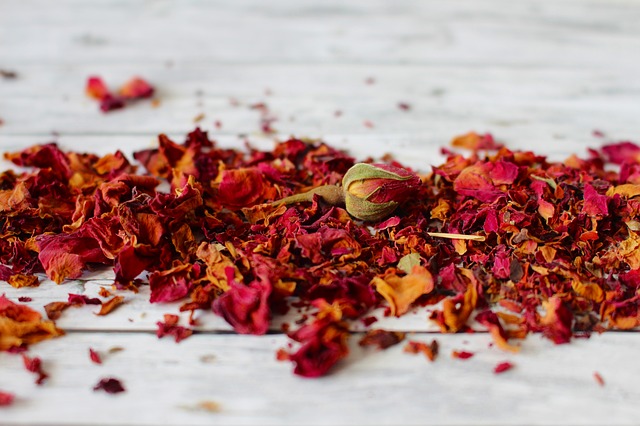







COMMENTS(49)
This is a great article. Thank you for sharing. I was unable to share with facebook from my AOL browser, so I forwarded it to my gmail addy and I will share it from there. Good job!!
Taylor,
You are so very welcome! Enjoy 🙂
Hey Catherine,
I loved this. I almost always have a tincture of rose around as I just love it – it makes me feel so nice. Just a drop or two.
But could you please put up a photo of yourself in your profile? I kow you are not in the witness protection program…
So how much is an once of petals? by weight or by volume? if weight, dried or fresh? ….so this post is only good if you have an acre or two of rose bushes…no one I know has enough rose petals for the majority of these ideas
What? Only 1 of the 12 ideas calls for an ounce. Most call for a cup or a jar. You can get a cup of petals from one or two flowers. You can get an ounce (fresh weight) from maybe 20 flowers or so.
Hi Lora,
I had to laugh when I read your comment, Lora, because as a city gal who lives on the second floor, I don’t know anyone who has “acres” of roses! I do know that I collect rose petals from a neighbor who has several bushes and I have plenty to last me ’til next year. To make rose petal tea, you can do as some herbalists do and weigh the dried petals, but I never do. I just eye-ball it and figure it’s fine. If I make it too strong, I just dilute it with water. As Michael pointed out in the comments, you can make a tea with a handful of dried petals. I like to pair equal amounts of rose petals with red clover come “moon time.”
Wild roses do grow —be nice if you could find some! None grow where I live 🙂
You can also buy rose buds cheaply from Asian markets or even organically, such as from Mountain Rose Herbs.
Don’t worry if you don’t have rose petals—there are MANY other plants out there that have similar properties to roses. Like those red clover flowers I was telling you about. They grow most abundantly!
Take care now, and thanks for your honest opinion 🙂
Why are you laughing because she has acres of roses? As being a farm girl and living on 60 acres of land it’s a very possible thing that they are wild. I have a woods that is 20 acres and there are more rose plants then you can count. And guess what! They are wild.
Roses and blackberry canes grow wild in the field and edges of the woods on my 25 acres. The cows won’t eat them and they are considered weeds by most around here.
Interesting and informative article. I have over 14 different rose types in my garden, (as they are my favorite) ranging from Mr. Lincoln climbers and Floribundas to double knockout mega-bushes and miniatures, all different colors. I have collected the petals off the almost-spent flowers, and had so many I didn’t know what to with them all. I like the idea of the tea, and the sachets, and possibly the aesthetically pleasing salad enhancers. My family will try just about anything that is edible. Most definitely will try the rose water idea. I have a dehydrator, but is it best to just let them air-dry? What about the hips, as well? Also, some roses release their scent early, and as they age, lose it entirely. Others have a deeper, longer lasting scent, that is heavier. How does drying the petals help maintain their scent? Is there an additive that would help prolong it? Thank you for the creative ideas in this article, and for any reply you might give.
Rose hips need to be frozen before use. My auntie Rose 😉 told me that. I am not sure if there is a certain amount of time they need to be frozen.
Is it safe to consume store bought roses?
Sue, Never eat conventional flower or grocery store roses as they contain harmful pesticides. Unless they are Organic and you can trust them that they are for sure Organic. The way things are these days, best to try to get them from the woods, a neighbor or friend that has NEVER sprayed their plants with pesticides or grow your own.
I had an organic gardening teacher who said that he wouldn’t even put store bought flowers into his compost because they are so full of chemicals.
My grandmother made rose petal jam. Have had it from a few others over the years. An absolute delight!
Thank you so much, these are some fabulous ideas!!!! We bought a property up in the mountains last year that was once upon a time (15 years ago) a treasured show rose garden. It had fallen into a terrible state of disrepair but we have spent over a year slowly getting it back to what it must once have looked like. We have 4 acres, and 250 separate varieties of roses!!! Yes, you heard that right. 250!!!!! Since day one I have wondered what an earth I could do from a practice sense with that many roses (being self sustaining homesteading type people). And lucky us, we also have 15 of the Rugosa variety, big healthy bushes. Thank you for such a helpful, useful article!!! Have you written something similar for rose hips? The only other useful use for roses we have found is that our goats love them and they are actually good for them as they are high in vitamin C. So we feed them all the prunings. Win win!!
Rose hips need to be frozen before use.
You can also dye natural cloth with roses, silk. Or try hapa zome, onto cotton cloth
how then?
Great article my only snaggle is i packed a mason jar with my rose petals covered in olive oil and by 6 weeks they were covered in mold ;@( make a note which i found by googling it ..dry the petals first then pack the jar …if i wouldve read the next article i wouldnt have made that error alas live and bloom 😉
wazzup
CAUTION-CAUTION-CAUTION!!!!! This post is scaring me because it suggests to use the rose petals from any source – which for most people (unless you have access to a natural rose garden) would be bouquets and flower arrangements… Please be aware that almost ALL of the roses (and other flowers) sold by florists and grocery stores in the USA are flown in from South America and are TOTALLY LOADED with POISONOUS Pesticides! Commercially grown roses have insanely high amounts of pesticides and other stuff, because they are grown to be pretty, and are not intended for human consumption — and speaking of consumption, watch out to protect your cats from being poisoned, they like to chew on bouquets of flowers. Any rose petals intended for human consumption, medicinal purposes, or topical treatments should be organic, or at the very least be wild growing and not to have been near any yard sprays or pesticides. I cannot stress this enough and I am sure this was a simple over-sight, but I’m very surprised that Marjorie did not stress this in her article, nor did the authors of any of the recipes mentioned. I apologize if I missed any cautions and certainly don’t intend to dis the otherwise lovely ways to use rose petals – just they need to be fit for consumption, that’s all. Thank you. 🙂
I love using rose water in rice puddings and other desserts. Is the home made rose floral water in #5 suitable for cooking?
I make the most heavenly Rose Petal Wine. Yum!
Great content! Very detailed! I do a lot of foraging and working with wild foods, but I’ve never gotten this involved with rose petals. Your article definitely got my attention. I may have to plant a couple more roses this year. My wife should love that…until I start picking off petals.
These are great ideas, but there really needs to be a warning that the roses bought in florist shops or grocery stores (unless in the food section) are almost never suitable for human consumption! They are not being sold as food, and therefore probably contain more pesticides (including highly toxic ones) than normal conventional produce does. I don’t recommend buying conventional flowers for holidays and special occasions anyway (organic and fair trade, and local if possible is the way to go), but if you or your significant other did get those conventional floral shop Valentine’s Day roses, don’t eat them or put them on your skin! I guess you could use them for scenting, but otherwise they’ll need to be throw out when their decorative purpose is over. Grow your own, know someone else who grows their own, or find wild ones instead.
Watch out if you make the rose glycerin, as glycerin shows up in the TSA tests for explosives. I was at the airport a while back and some people next to me were being detained–it is also an ingredient in some sunscreens!!!
Most roses, today, are not aromatic. The aroma has been bred out of the roses in exchange for longer life duration of the flower once it is harvested.
Also, there is a recipe for making beads out of rose petals and wearing them, once dried, as jewelry around one’s neck. Beads are made and before drying, holes are punched thru so that once dried, they can be strung as pearls and worn.
Back in the late 70s I visited a boutique ice cream store in San Francisco, just north of the zoo. Their flavor of the month was called American Beauty. The flavor was excellent. There were very small pieces of rose petal in it. I wish I had the recipe. Maybe someone could figure it out (hint, hint!).
Your #5 explanation was remarkable. Have you ever considered going on scientific lab work? #nojoke
I can’t wait to try the rose glycerin; sounds lovely and my roses are putting out their first flushes of bloom!
I have plenty of new things to try now!
It’s very hard to find roses that have fragrance anymore.
Does the color matter with medicinal and edible rose petals?
Why is The Grow Network an Amazon affiliate, when Jeff Bezos just had a fit because Seattle wanted to put a small tax on businesses to pay for affordable housing for the homeless?? He has enough money to end homelessness in the whole country single-handedly.
#BoycottAmazon!!
So much great information that is really not out there evethere:)! Thanks:)!!
#13 (and my personal favorite) – roll a blunt/joint with cannabis flower..rose is a very healing herb and can be safely smoked (as long as they are organic and “cide” free) rose petals are often in “herbal smoke” blends so.. why not ! -Heather 😉
I have wondered if it is possible to use dried rose petals in making rose water or the rose oil or does it need to be fresh?
Are the estrogenic properties in roses something that someone with breast cancer should avoid?
Hi lbcrocker. I’m not a doctor, so this is just my own opinion (not medical advise). But I think that xenoestrogens from synthetic chemicals are a lot more dangerous than phytoestrogens (plant estrogens). From the sources I’ve looked at, phytoestrogens often have a protective effect. But studies often lump synthetic and plant estrogens together as xenoestrogens, which makes them all look bad.
The word “estrogen” describes a range of effects, rather than some specific chemical. So different plants can have different effects and different strengths. Some, like soy, are rather strong and can cause problems in excess (especially for men). But many phytoestrogens are beneficial for men and women. After all, both men and women have estrogens and testosterone in their bodies. We use both. But again, I’m no doctor.
I’m going to use rose hips (just a bit off topic) to make rose ice cream next year. The hips around us are candy-sweet.
Very lovely ideas and I am going to give some of them a try! Thank you so much 🙂
These are great recipes and love the information
At my deer and elk sanctuary was a totally affectionate white tail deer who began life in our house because, as a triplet, she was doomed. Deer die when their teeth are worn down. Her food when she got old was adjusted for that, and she lived almost 3 lifetimes. I fed her five-gallon bucketsful of roses, hips and all.
I made a simple type of rose hydrosol with distilled water and use it to spray on my sheets each morning…then open the doors and doors for a fresh room.
Certainly proves the adage that a rose by any other name is…. well…. medicine, food, fragrance etc! LOL
professional logo designer
I have been exploring how to make herb/spice/flower finishing salts for our local school FarmtoSchool fundraiser. I was so surprised that the lemon rose salt was one of my favorites! It also looks so beautiful, wish I could show you!